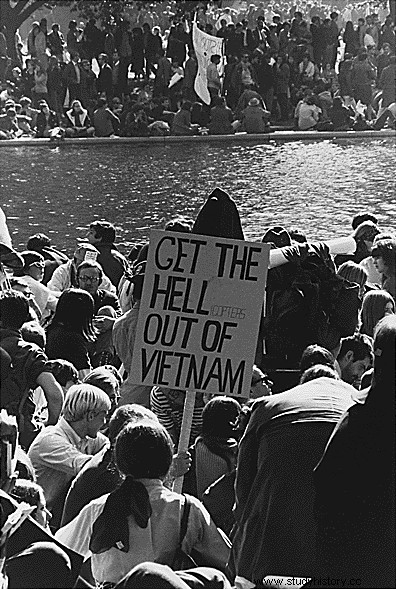- Vietnam was split in two after the Indochina War (1946-1954), at the height of the 17 th north parallel, by the Geneva agreement of July 20, 1954.
- The Vietnam War (1955-1975) opposed North Vietnamese communists (supported by the USSR and China) and South Vietnamese capitalists (supported by the United States). It was one of the main theaters of conflict during the Cold War.
- Following the Tet offensive of January 30, 1968, Lyndon B. Johnson, President of the United States, decided not to run again. Richard Nixon thus succeeded him in 1969.
1973

Characters
Phan Dinh Khai
Henry Kissinger
Richard Nixon
Nguyễn Văn Thiệu
Procedure
After his election, Richard Nixon decided to implement the American policy known as the “Vietnamization” of the conflict. It's about letting the Vietnamese manage the war among themselves. Thus, the ground troops are demobilized after the army of South Vietnam is reinforced.
In March 1972, North Vietnam took advantage of the American military withdrawal to launch a major offensive (sometimes called the Easter Offensive). With the present support of the United States, the Vietnamese of the South manage to release certain cities, in particular the road of the capital of Cambodia, Phnom Penh.
Richard Nixon, pressed by the major protest movements in his country (several large gatherings of the population) agrees to repatriate all the troops if a ceasefire agreement is reached. On January 27, 1953, the Paris Peace Accords were signed, putting an end to the conflict. After negotiation with the southern president, the communists undertake to release the prisoners they hold. A National Concord and Reconciliation Council is set up with the aim of organizing free elections in the country. The Americans must repatriate all of their troops within 60 days of signing.
Consequences
-
The two parts of Vietnam are, after the signing of this agreement, alone. But the national council of harmony and reconciliation quickly becomes wobbly. On both sides, the desire to resume fighting is becoming clearer. In October 1974, the communist leaders considered the Paris agreements null and void and prepared an invasion from the South.
-
In March 1975, the northern offensive was launched. On April 30, 1975, Saigon fell to the Communists, ending the war. The last American helicopter leaving the embassy at the time of the capture of the city is a symbol of this terrible defeat suffered by the greatest power in the world. Civilians climb the US Embassy in hopes of being evacuated by helicopter.
-
Vietnam found itself unified, under the name of the Socialist Republic of Vietnam, on July 2, 1976. However, reconciliation was not on the agenda:thousands of people (including collaborators of the deposed regime in Saigon) were sent in re-education camps. A large number of South Vietnamese are fleeing the country, leading to the phenomenon of boat-people (a term used to designate migrants fleeing Vietnam by sea).
